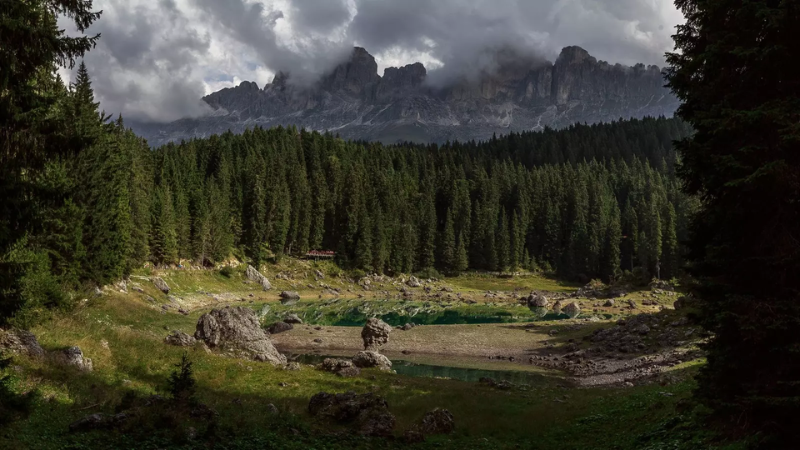
Why protected forests are critical to reaching climate goals
Protected forests absorb and capture carbon more than new technologies attracting billions in funding. Data shows that protected forests store 28% more carbon than ecologically similar but unprotected forests.
In the race to net zero, public and private funders are flocking to experimental technologies, such as direct air capture, to remove carbon from the atmosphere, investing tens of billions into mechanisms that could fend off the worst climate outcomes. The excitement is understandable; if there is a moonshot solution to be found, we’re fuelling the rocket ship.
But here’s the reality – right now, these technologies sequester negligible amounts of carbon. The 30 carbon capture and sequestration (CCS) facilities currently in operation capture just 42 megatons per year, roughly one-tenth of 1% of annual human emissions. Nearly all of the carbon that humans are able to sequester in a year comes through land management – chiefly forest protection.
Protected areas yield well-documented benefits for wildlife and biodiversity. But a new study from Conservation International and three research universities puts a finer point on just how vital protected forests are to our climate bottom line, too. Using spatial data from a NASA mission to build a first-of-its-kind global forests map in 3D, the Global Ecosystem Dynamics Investigation (GEDI) found that protected aboveground forests currently store more than 61 gigatons of carbon, equal to the annual emissions of 13 billion cars.
While protected areas represent approximately 11% of the measured forested area, they store 26% of the total estimated aboveground carbon. Brazil’s Amazon has the highest total carbon stock in protected areas, accounting for as much as 30% of the global total found in protected areas.
Resourcing protection
The results here leave no ambiguity. Protected forests don’t just safeguard biodiversity; they are imperative for meeting our climate goals. Still, relative to other climate solutions, protected areas are underfunded, receiving just $24 billion annually, roughly 35% of the minimum funding needed to manage existing protected areas adequately.
There is a common misconception that the work is done once an area is designated as protected. But protected status is a mere snapshot in time. Economic volatility, political turnover, lapses in enforcement and the discovery of new resources can all trigger rollbacks in protected status. In the absence of legal protections, or when those legal protections weaken, forests are more likely to be degraded and destroyed. These threats heighten when funding dries up.
Fortunately, the best mechanism to bridge the resource gap already exists. Global South countries receive crucial funding through the voluntary carbon market (VCM) to protect forests – a decentralized market to buy and sell carbon credits representing certified removals or reductions of greenhouse gases.
Credits issued through the VCM must provide an empirical reduction or avoidance of emissions as a result of the project, a concept known as “additionality.” Protecting forests that are standing, critics say, produces no “additional” outcome.
Investing in the future
The new research debunks that misconception once and for all. GEDI data shows that protected forests store 28% more carbon than ecologically similar but unprotected forests.
Critically, we’ve additionally saved roughly the equivalent of an entire year of global fossil fuel emissions (about 10 gigatons of additional carbon) through long-term and actively protected forests compared to ecologically similar but unprotected areas. And protecting these forests requires work, including funding for rangers and local communities to do that work and they need money to develop sustainable livelihoods. Funding protected forests still facing anthropogenic pressures, therefore, leads to clear and additional carbon sequestration.
Our best course of action is continued support of VCM investment through markets with robust verification standards. Doing so will strengthen biodiversity at a time of mass extinction, negate disastrous climate outcomes and fund Global South communities that do the heavy lifting in combating climate change.
Funders should think of their approach as an investment portfolio. Imagine you were handed $100. You’re told to invest that money such that it yields $500 – the clock is ticking and the stakes are high. Would you sidle up to the roulette table and let it rip? Or would you set aside a chunk of that money for an index fund, bank the standard 10% annual return, and proceed from there?
That is the choice we face today. We don’t have to choose between funding experimental technologies that could help tomorrow and protecting forests we know help today; we can and must do both.
-
Patrick Roehrdanz, Climate Change and Biodiversity Director, Conservation International.
Sébastien Costedoat, Social Science and Impact Evaluation Senior Manager, Conservation International.
Source: weforum.org

